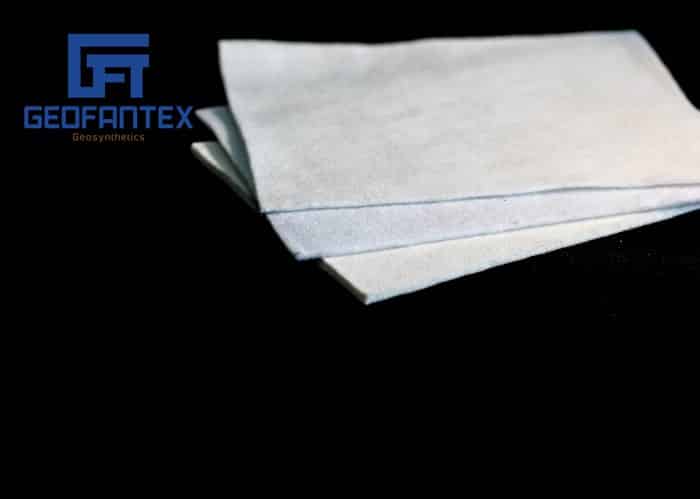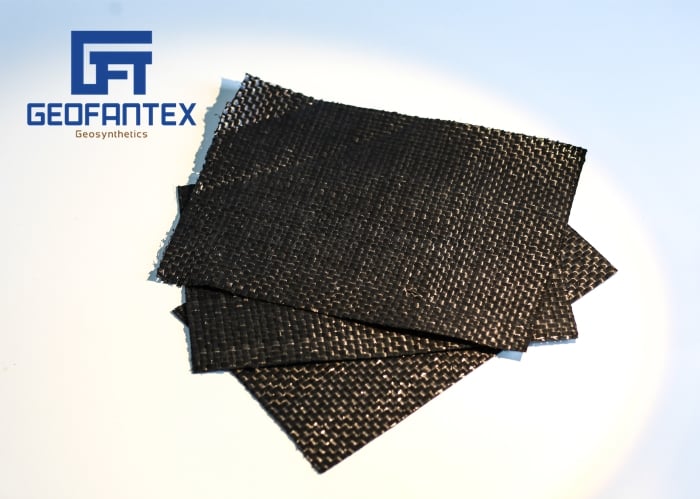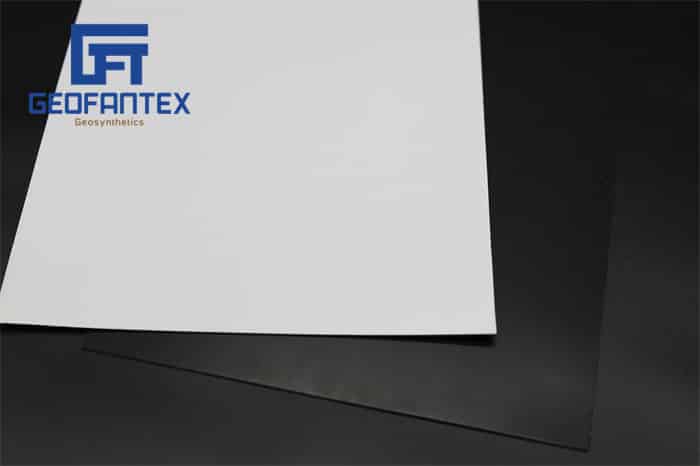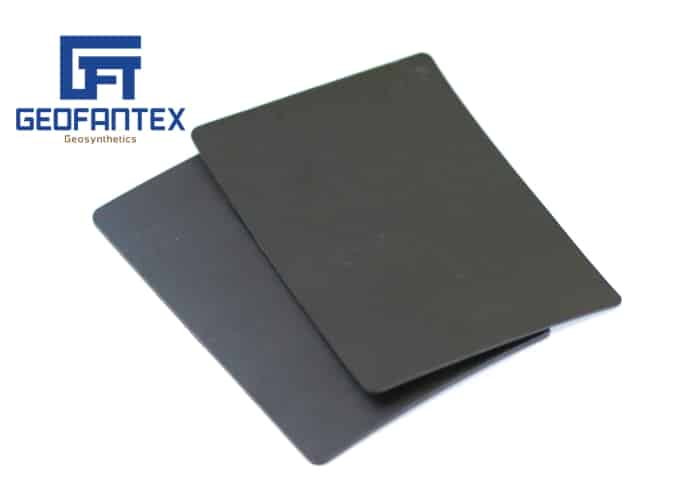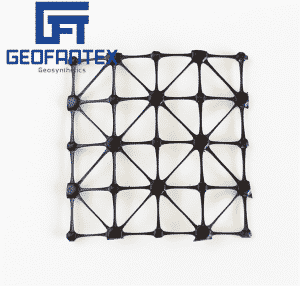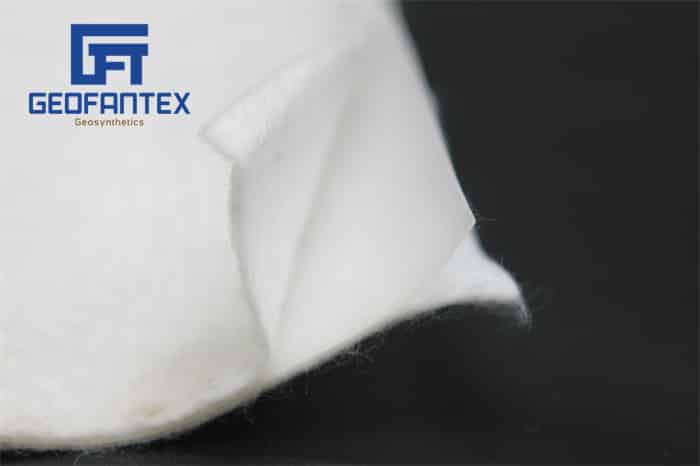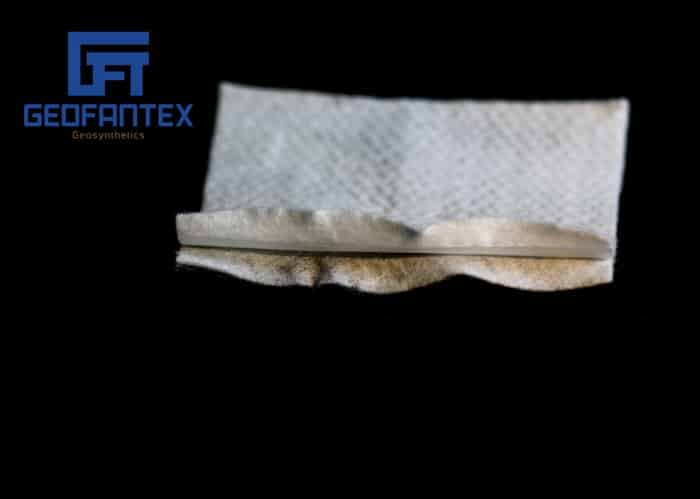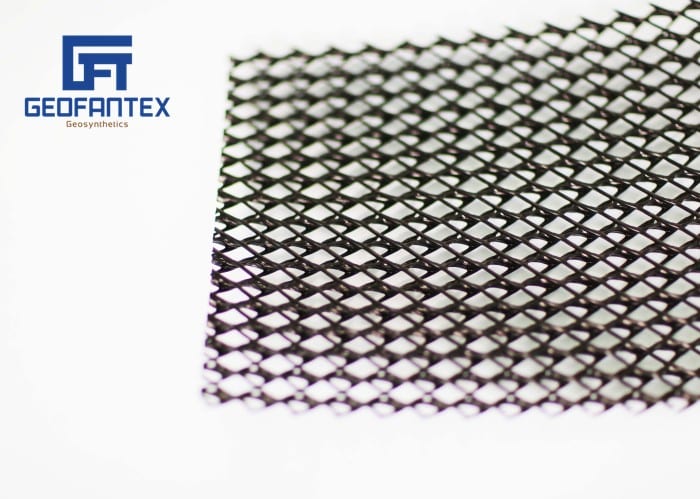+86-159 9860 6917
info@geofantex.com
geofantex@gmail.com
+86-400-8266163-44899
Geosynthetics and Their Application(Part 1)
1. Introduction
Geosynthetic reinforced soil technology is a new geotechnical technology, but it has developed rapidly. Due to its reasonable structure, good stress conditions, simple construction and significant benefits, it is widely used in various filling projects. It uses synthetic polymers, such as plastics, chemical fibers, synthetic rubber, etc., as raw materials to make various types of products, which are placed inside the soil, on the surface or between layers of soil to strengthen or protect the soil.
Reinforcement is a technique of laying a certain high tensile modulus bar in a certain direction in the soil to increase the shear strength, tensile strength and integrity of the soil. The main reinforcement materials are geotextiles, geogrids, etc. Geotextiles for reinforcement are generally woven geotextiles. The main application areas of reinforcement technology are: soft soil foundation reinforcement, the construction of steep slopes on stable foundations and the construction of retaining structures.
2. Overview of the development of soil composite materials
2.1 Derived from the name
Geosynthetics, geosynthetics is a general term for various products made of synthetic polymers used in geotechnical engineering. Because they are mainly used in geotechnical engineering, they are named “geotechnical” (geo-) and called “geosynthetic materials” to distinguish them from natural materials.
It is placed inside the soil, on the surface, or between layers of soil to strengthen or protect the soil.
The early products are mainly permeable geotextiles (commonly known as geotextiles) and basically impermeable geomembranes and combined products, so they are called: geotextiles, geomembranes and related products.
With the need for engineering construction and the development of manufacturing technology, the product category has been continuously expanded. In 1994, the 5th International Geosynthetics Academic Symposium held in Singapore was officially identified as: Geosynthetics.
2.2 Overview of International Development
The use of natural plants as geotechnical engineering materials has a history of thousands of years. For example, thatch is still used in most areas of northern China as a reinforcing material for soil.
In water conservancy projects in the Netherlands, a large number of wickers are used to reinforce embankments to prevent erosion.
But natural plants perish and don’t last; metals rust; and by the 1930s, plastics, synthetic fibers, and synthetic rubbers were introduced.
Geosynthetics have emerged with the development of chemical industrial polymers and engineering expansion, and their application technology depends on the basic principles of geomechanics.
One of the founders, Professor C Dr.Giroud .J.P.) once hailed it as “probably an important revolution in the history of geotechnical engineering”.
The exact age of the application of synthetic materials has been difficult to verify.
It can only be known from some early landmark engineering cases;
In the 1930s, polyvinyl chloride geomembrane has been used in swimming pools to prevent seepage; in 1953, the U.S. Bureau of Reclamation began to use polyethylene membranes to prevent seepage in channels;
The former Soviet Union also laid low-density polyethylene film on the canal system earlier;
In 1958, Florida, the United States, spread geotextiles as filter pads under the coastal block stone slope protection, which is considered to be the beginning of the application of geotextiles in modern history.
From 1952 to 1953, the Netherlands encountered a severe storm, causing heavy loss of life and property. After the disaster, the famous delta project was launched. This project used a large number of early geotextiles, thus greatly promoting the development of geotextiles. In 1968, the Netherlands developed and developed a double-layer geotextile sewn concrete mold bag for revetment.
In 1968, the French company Rhone Poulenc (CRhone Poulenc) pioneered non-woven geotextiles, which can replace traditional sand and gravel materials as filter layers, expanding the application fields of geotextiles;
In the early 1980s, the British Mercer invented the geogrid, which is still the best material for soil reinforcement, which is made of polymer.
In the late 1970s, there were plastic drainage belts, which replaced sand wells for soft foundation drainage consolidation.
The large-diameter and long-length geotechnical tube bag made of textile can accommodate dredged sand, silt, etc., dehydrate and consolidate to form a continuous large-volume soil tube bag, which can be used as an anti-shock wall on the shore or built Hengong spur dam, Shun dam, as well as reclaiming land and building artificial islands.
In the late 1980s, a large volume of geotextiles was produced. The geotextiles were placed on open-bottom boats to contain wastes, dredged soil, etc., and then closed. They were transported to designated waters by GPS positioning system, and the bottom of the ship was opened to build underwater stable platforms, breakwaters, etc. , or control seabed erosion and build submerged dam structures.
In order to improve the ecology and protect the environment, various three-dimensional geonet mats have come out one after another, which can be used for planting grass on slopes.
The great attention paid to environmental protection has not only greatly improved the anti-seepage geomembrane and application technology, but also contributed to the successful development of geosynthetic bentonite cushion (GCL). GCL combined with geomembrane constitutes the anti-seepage system of the landfill. . And gradually extended to channels, pools and artificial lakes and other anti-seepage.
2.3 Overview of China’s development
The development of the application of geosynthetics in my country can be divided into four stages.
(1) Spontaneous application period
As early as the 1960s, the Dayuzhang Irrigation Area in Shandong Province and the People’s Shengli Canal in Henan used plastic films as anti-seepage channels, and were later popularized for leakage prevention in pools and reservoirs;
In 1965, Liaoning Huanren Hydropower Station used a bituminous polyvinyl chloride membrane to prevent cracks and leaks on the upstream face of the concrete buttress dam;
In 1976, the Jiangduxi horses on the bank of the Yangtze River in Jiangsu were weighed with flat silk geotextiles combined with concrete blocks to make soft sinkers to prevent riverbank collapse;
The characteristic of this period is that the material is applied in individual projects, neither products with certain specifications nor stereotyped design methods are used.
(2) The period of technology introduction
In the early 1980s, the Academy of Iron Sciences used 20,000 square meters of non-woven geotextiles donated by DuPont to try to control the long-standing muddying disease in railways. The introduction of geotube and localization by Wuxi Woolen Dyeing Factory. In 1983, reinforced technology and reinforced geogrid were introduced. By the mid-1990s, it had researched and produced localized products on its own.
(3) The period when the organization was established
In 1983, the International Geotextiles of Society (IGS for short) was established, and in 1994 it was renamed the International Geosynthetics of Society (still abbreviated as IGS).
At the end of 1984, the “Geotextile Science and Technology Information Cooperation Network” was established.
In 1986, it was renamed “Geosynthetics Technology Collaboration Network” (CTAG for short)
In 1990, China officially joined the “International Society of Geosynthetics” (CIGS), and established the “China Committee of the International Society of Geosynthetics” (CCIGS);
Since 1986, eight National Geosynthetics Academic Conferences have been held successively in Tianjin, Shenyang, Yizheng, Yichang, Xi’an and Shanghai.
In 1995, the “China Technical Association on Geosynthetics” (still referred to as CTAG) was formally established.
(4) Entering the standardization period
During the catastrophic flood in 1998, national leaders and leaders of various departments recognized the significant role of geosynthetics in flood control and emergency rescue;
The Ministry of Water Resources took the lead in compiling the technical specifications for the application of geosynthetics SL/T225-1998 “Technical Specifications for the Application of Geosynthetics in Water Conservancy and Hydropower Engineering”, ending the state of no standards in my country;
Subsequently, national standards and industrial technical standards for railways, highways and water transportation were released;
Product standards and material testing standards follow.
At the end of 1998, geosynthetics and technology entered a period of standardization.
3.Types and characteristics of geosynthetics
3.1 Material Types

Geosynthetic polymers (raw materials) features
| Name | Features |
| Polyethylene (PE) | Good flexibility, ductility, transparency, cold resistance, processability |
| Polypropylene (PP) | Heat resistance, chemical stability, good insulation, light resistance, poor toughness |
| Polyvinyl chloride (PVC) | High strength, wear resistance, flame retardant, poor thermal stability, easy to age |
| Polyester (PET) | has the best strength and toughness among thermal toughness plastics, good light transmittance, acid and alkali resistance, soluble in ammonia water |
| Polyamide (PA) | Highest strength among synthetic fibers, wear-resistant, non-flammable, alkali-resistant and acid-resistant |
| Polystyrene (PS) | Chemical resistance, good water resistance and electrical insulation, not heat-resistant and easy to age |
| Neoprene (CR) | Oil resistance, acid and alkali resistance, high tensile strength and air tightness, poor storage stability |
(1) Geotextiles Non Woven
Geotextile, also known as (geotextile fabric or Geotextile membrane), refer to membranes for civil engineering that are woven with synthetic fibers or made of non-woven processes such as cementation, thermally bonded or needle punched.
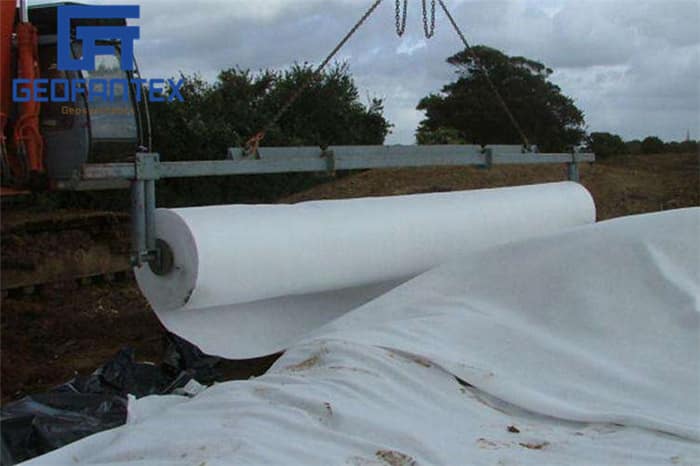
Nonwoven geotextiles typically contain thermal bonds, chemical bonds, and mechanical bonds.
Spunbond is a kind of bonding method. It is a product formed by melting, extruding, spinning polymer raw materials into a web and reinforcing fibers. This fabric is thin in thickness, high in strength and high in permeability. Due to the short manufacturing process, good product quality, many varieties and specifications, low cost and wide application, it has developed rapidly in my country in recent years.
The chemical bonding method geotextile is to uniformly apply the adhesive to the fibers through different processes. After the adhesive is cured, the fibers will be adhered to each other, so that the mesh can be reinforced, and the thickness can reach 3mm. Commonly used adhesives are polyvinyl acetate, polyvinyl acetate and so on. Rolling can also be performed prior to application of the adhesive, resulting in thinner and smaller pore size products. Such products are rarely used in engineering.
The mechanical bonding method uses different mechanical tools to reinforce the fiber web. The most widely used method is the needle punching method, as well as the spun lace method. The needle punching method uses many needles with triangular or prismatic cross-sections and hooks on the sides mounted on the bottom plate of the needle punching machine, which are driven by the machine to reciprocate up and down, so that the fibers in the net are entangled with each other, so that the net is reinforced. . The thickness of the product is generally more than 1mm, the porosity is high, the permeability is large, and the performance of reverse filtration and drainage is good. It is widely used in water conservancy projects. Spunlace is the use of high-pressure jets of water to shoot the fiber web, so that the fibers are entangled with each other and strengthened. Its products are relatively soft and are mainly used as sanitary products, but have not been used in engineering.
(2) HDPE Geomembrane
Geomembrane is a basic impermeable material with good anti-seepage and anti-leakage properties. It is widely used in dams, embankments, sluices, underground works, cofferdams, landfills and other projects.
The role of geomembrane: filtration, drainage, anti-seepage, soil protection, resistance to underground slurry; to prevent the upper and lower layers from being mixed, so that the local load distribution is evenly distributed The technology of geomembrane application lies in:
①Appropriate material
② Reasonable structure design of anti-seepage layer
③ Correct and strict construction
Measures to improve geomembrane performance and reduce costs:
(1) Incorporating carbon black can improve the ability to resist sunlight and ultraviolet rays, and can delay aging;
(2) Incorporation of lead salts, barium, calcium and other derivatives can improve the heat resistance and light resistance stability of the material;
(3) Incorporating lubricants such as talc can improve operability;
(4) Incorporating bactericides can prevent bacterial destruction, etc.
(3) Biaxial Geogrid
Geogrid is a flat mesh material with open-cell mesh and high strength formed by directional stretching of polymer polymer materials.
Features: high flexibility, ductility, fatigue resistance, chemical corrosion resistance of soil and groundwater, mildew resistance, good interlocking with fillers Geogrid is mainly used for soil reinforcement, and is an engineering application A wide range of reinforced materials.
Geogrid Applications:
①It is used for the reinforcement of soft soil foundation, increasing the shear strength of the foundation, improving the bearing capacity of the foundation, and promoting the uniform settlement of the foundation;
② It can be used to reinforce the foundation slope, and the steep slope can be set to 1:1.5 to achieve the purpose of less land occupation and to prevent water erosion;
③ At the junction of half excavation and half-filling, excavation and filling, or the widening of the roadbed, laying geogrids at the junction of the old and new roadbeds can reduce uneven settlement;
④ It can also be used for the pavement to reduce pavement cracks (mainly on the bottom surface of the base) and rut depth (mainly on the top surface of the base) to prolong the maintenance period of the road surface and reduce the thickness of the road surface.
⑤ It is used for the back of the bridge abutment or other artificial structures to prevent the settlement of the filling part, so as to reduce the phenomenon of jumping.
(4) Geocomposite
Composite geosynthetics are products that combine two or more geosynthetics. These products combine the properties of each combined material to meet the specific needs of the project.
Different projects have different comprehensive functional requirements, so there are many varieties of composite geotechnical materials, which are mainly divided into two categories: composite geomembrane and composite drainage material.
Composite geomembrane is a product that combines geomembrane and geotextile (including woven and non-woven shapes). Or composite geotechnical materials such as reinforced materials. It has many functions and great development potential. Due to the effect of cloth reinforcement, the composite membrane has both the characteristics of cloth and the characteristics of membrane, and the resistance to bursting, tearing and puncturing is greatly enhanced. The deformation rate of the membrane and the strength of the cloth are given priority in the design.
The advantages of composite geomembrane:
①Composite with woven geotextile, the geomembrane can be reinforced, and the protective membrane will not be damaged by external forces during transportation or construction;
②The non-woven geotextile composite not only provides reinforcement and protection to the membrane, but also plays the role of drainage and exhaust, and at the same time improves the friction coefficient of the membrane surface.
Types of composite drainage materials:
Drainage material composed of plastic drainage board, non-woven fabric and plastic mesh pipe;
Drainage material composed of non-woven fabric, core material and geomembrane;
Drainage materials composed of non-woven fabrics, mesh pipes and geomembranes;
Non-woven fabrics, core material drainage pipes, etc.
The soft drainage pipe, also known as the seepage hose, is made of high-strength steel wire ring as the supporting wall + pipe wall wrapping material (with the functions of reverse filtration, water permeability and protection).
(5) Other geosynthetics
(1) Geotube
Geotube is a continuous (or separate) bag-like material made of double-layer polymer chemical fiber fabric, which can be used instead of formwork. A high-pressure pump is commonly used to penetrate the concrete or mortar into the geotube, and finally form a plate-like or other shaped material. Mainly used for scouring engineering.
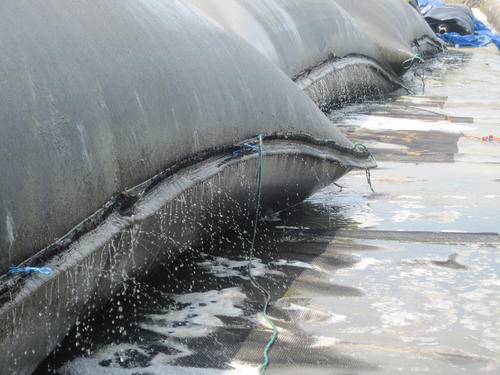
(2) Geonet
Geonet is a flat, mesh-like geosynthetic material pressed from synthetic material strips or synthetic resins, which may vary in performance due to mesh size, shape, thickness and manufacturing methods.
The main features of the geonet are low tensile strength and high elongation; the interlocking between the geonet and the subgrade filler can increase the shear strength of the subgrade; control the deformation of the base; prevent the loss of topsoil on the subgrade slope.
Geonets (geonet) for slope protection, grass planting and soft foundation reinforcement
It is used in soft foundation treatment, roadbed reinforcement, slope protection, bridge abutment reinforcement, coastal slope protection, reservoir bottom reinforcement and other projects. Laying geonets on road slopes can prevent rocks from slipping and cause harm to people or vehicles; wrapping the ballast with geonets can prevent the loss of ballast and deformation of the roadbed, and improve the stability of the roadbed; laying geonets can strengthen the road surface, to prevent the development of reflection cracks; as a reinforcement material in the filling of the retaining wall, the geonet can disperse the stress of the soil, limit the lateral displacement, and enhance the stability; the geonet is used to make gabions for dams and rock surfaces. protection against erosion, landslides, and soil erosion.
(3) Geocell
Geocells are honeycomb-like three-dimensional structures made of polymers that can be folded for transportation and storage and then opened for use during construction.
Features: The open geocell can keep its shape unchanged, and fill it with soil. Due to the restriction of the lateral displacement of the soil by the cell, the stiffness and strength of the soil can be greatly improved. It is widely used in soft soil foundation reinforcement and protective engineering.

3. Characteristic index of geosynthetics
1. Characteristic indicators
(1) Physical indicators: thickness, equivalent aperture, etc.;
(2) Mechanical indicators: tensile strength, elongation, tear strength, holding strength, expansion strength, etc.;
(3) Hydraulic characteristic index: permeability, clogging index, water flux and anti-seepage index
(4) Interface characteristics: the friction coefficient of soil and geosynthetics and the interface characteristics of interaction
(5) Rheological properties: creep strength reduction coefficient, long-term fatigue strength characteristic index.
(6) Aging characteristics: reduction factor of ultraviolet aging intensity, chemical corrosion resistance index, freeze-thaw and dry-wet impact index, etc.
2. Anti-aging measures
(1) Factors affecting the aging of geosynthetics:
Thermal oxidation caused by heat and temperature;
Photooxidation by ultraviolet rays in sunlight;
Chemical and biological erosion, dry and wet effects, freeze-thaw changes and mechanical wear, etc., among which photo-oxidation has a strong destructive effect;
(2) Measures to delay the aging of geosynthetics:
Add anti-aging agents, such as an appropriate amount of antioxidants, light stabilizers and dark carbon black, to the raw materials to resist the effects of light, oxygen, heat and other external factors on the material;
Take protective measures in the project, such as minimizing the exposure time of materials to sunlight, covering with rock soil or deep water, etc.
This article focuses on the development overview and common types of geosynthetics. The next article will explain the application and cases of geosynthetics, so stay tuned.
Get the latest price?
We’ll respond as soon as possible(within 12 hours)





